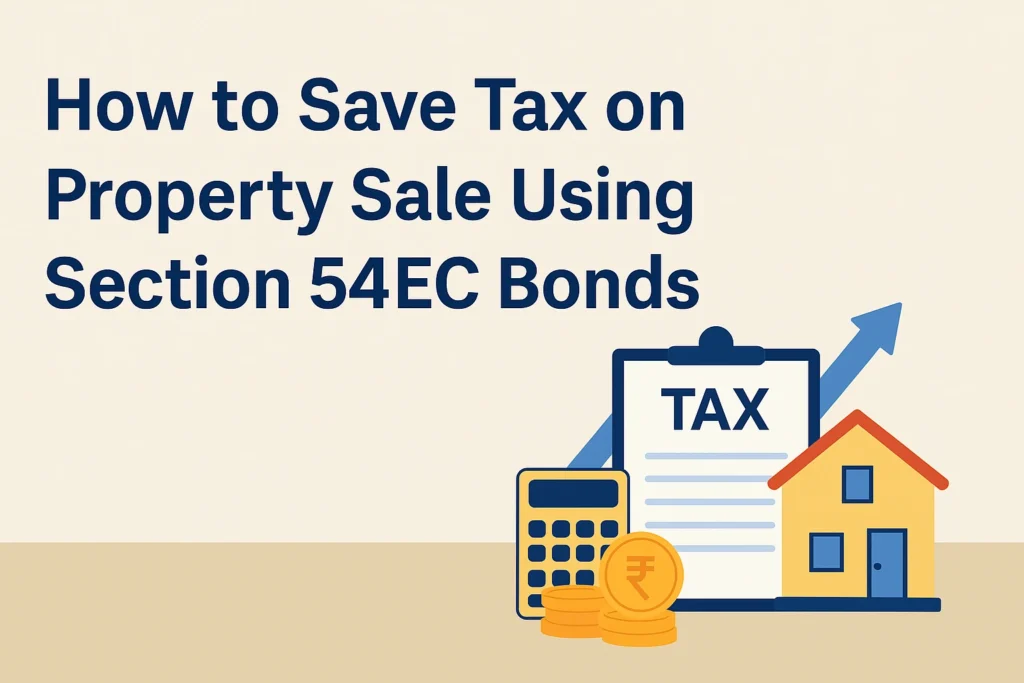Understanding Section 54: Tax Exemption on Sale of Residential Property
When you sell a residential property, you may be liable to pay Long-Term Capital Gains (LTCG) tax. However, under Section 54 of the Income Tax Act, 1961, you can claim an exemption by reinvesting the LTCG in another residential property. This blog explains how you can utilize this provision to save taxes efficiently.

Who Can Claim Section 54 Benefits?
- Eligible Assessees: Only Individuals and Hindu Undivided Families (HUFs) can claim this exemption. Companies and firms are not eligible.
- Type of Gain: The exemption applies only to Long-Term Capital Gains (LTCG). The property must be held for more than 24 months before its sale.
- Eligible Capital Asset: The property sold must be residential (building or land appurtenant thereto). The new investment must also be in a residential house in India.
How Does Section 54 Work?
1. Full Exemption on Reinvestment
If the entire LTCG is reinvested in a new residential property, the entire capital gain is tax-free.
Example: LTCG is Rs. 2 Crores and New Asset Cost is Rs. 4 Crores. In this case, complete LTCG of Rs. 2 Crores will not be taxed, subject to satisfaction of other conditions, as the same gets invested fully in New Asset
2. Partial Exemption on Reinvestment
If only part of the LTCG is reinvested, the remaining amount is taxable.
Example: LTCG is Rs. 5 Crores and New Asset Cost is Rs. 3 Crores. In this case, out of Rs. 5 Crores, Rs. 3 Crores will not be taxed subject to satisfaction of other conditions and Rs. 2 Crores will be taxed normally u/s 45
Key Restrictions & Conditions
1. Maximum Exemption Limit
- The maximum tax exemption under Section 54 is ₹10 Crores.
- If the cost of the new property exceeds ₹10 Crores, the excess amount won’t be considered for exemption.
Examples:
- LTCG is Rs. 15 Crores and New Asset Cost is Rs. 9 Crores. In this case, out of Rs. 15 Crores, Rs. 9 Crores will not be taxed subject to satisfaction of other conditions and Rs. 6 Crores will be taxed normally u/s 45
- LTCG is Rs. 15 Crores and New Asset Cost is Rs. 12 Crores. In this case, out of Rs. 15 Crores, Rs. 10 Crores will not be taxed subject to satisfaction of other conditions and Rs. 5 Crores will be taxed normally u/s 45
- LTCG is Rs. 15 Crores and New Asset Cost is Rs. 18 Crores. In this case, out of Rs. 15 Crores, Rs. 10 Crores will not be taxed subject to satisfaction of other conditions and Rs. 5 Crores will be taxed normally u/s 45
2. Number of Properties Allowed
- If the LTCG is less than ₹2 Crores, then you can buy up to two residential properties.
- This benefit can be availed only once in a lifetime.
3. What if the LTCG was not invested?
- Unapplied or not invested LTCG shall be deposited in CGAS or in any other prescribed scheme before the due date of ITR, which is to be filed for PY in which the transfer took place, and such ITR shall be accompanied by proof of such deposit.
- However, if any LTCG is already utilised by the assessee for the purchase or construction of the new asset together with the amount so deposited as above shall be deemed to be applied or invested in new asset.
- If amount deposited in CGAS or any other prescribed account is not utilised wholly or partly for the purchase or construction of the new asset within the specified period, then, unutilized amount shall be charged u/s 45 as the income of PY in which the period of 3 years from the date of the transfer of the original asset expires.
Time Limit for Investment in a new asset to claim the benefit of exemption
To avail the exemption, the new property must be purchased or constructed within these deadlines:
- For purchasing a house: Within 1 year before or 2 years after the sale date.
- For constructing a house: Within 3 years from the sale date.
Tax Implications on Selling the New Asset or New Acquired Residential Property
If the new property purchased for claiming exemption is sold within 3 years, the tax benefits are reversed:
- Scenario 1: If the new property cost is higher than LTCG, the cost of the new asset sold will be reduced by the LTCG amount when calculating future capital gains.
- Scenario 2: If the new asset’s cost was lower than LTCG, the entire sale price will be taxable as capital gains by assuming the cost of new asset as nil.
FAQs on Section 54
1. Can I claim Section 54 exemption for the sale of a commercial property?
No, Section 54 applies only to residential properties. However, if you sell a commercial property, you can explore Section 54F for tax exemption.
2. Can I invest in an under-construction property?
Yes, but the construction must be completed within 3 years from the sale date.
3. Can I buy a property outside India to claim the exemption?
No, the new property must be located in India.
4. Can I claim exemption multiple times?
Yes, but the option to buy two properties (if LTCG is under ₹2 Crores) is available only once in a lifetime.
5. What if I jointly own the new property?
You can claim exemption only on your share of the new property.
Conclusion
Section 54 of the Income Tax Act is a great way to save taxes legally when selling a residential property. By strategically reinvesting your LTCG, you can reduce your tax burden significantly. Make sure to follow the time limits and conditions to maximize your savings.
Need further tax guidance? Drop your questions below! or Contact +91-9871023251
Tabular Comparison of Section 54 Series from Section 54 to Section 54H
https://docs.google.com/spreadsheets/d/1CFQTLWZwergI_DWJOCpCroiYctlz7XpqqxwJhzg-V1Q/edit?usp=sharing


